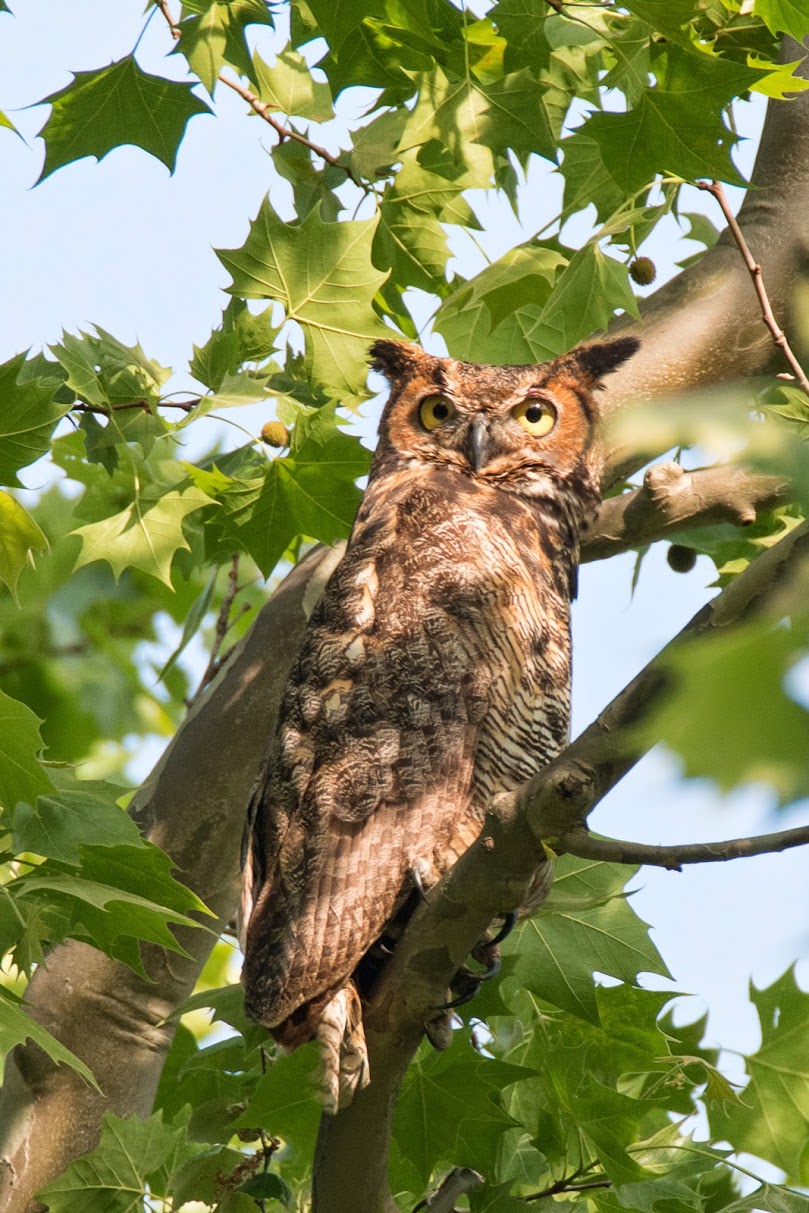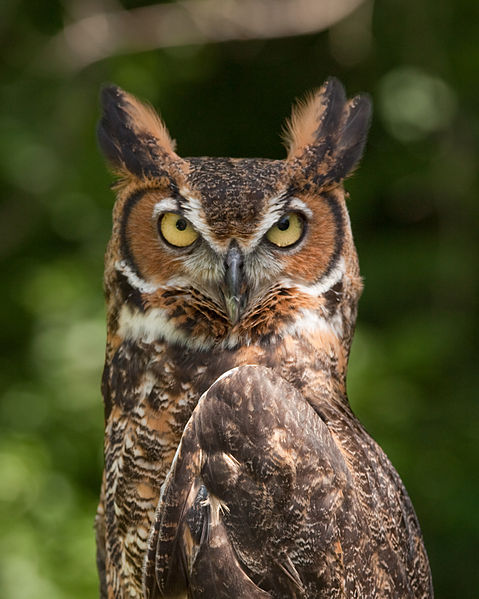Great Horned Owl
The great horned owl (Bubo virginianus), also known as the tiger owl, is a large owl native to the Americas. It is an adaptable bird with a vast range and is the most widely distributed true owl in the Americas.
The great horned owl is the heaviest extant owl in Central and South America and is the second heaviest owl in North America, after the closely related but very different looking snowy owl (B. scandiacus). It ranges in length from 43–64 cm (17–25 in) and has a wingspan of 91–153 cm (36–60 in). Females are invariably somewhat larger than males. An average adult is around 55 cm (22 in) long with a 124 cm (49 in) wingspan and weighing about 1.4 kg (3.1 lb). Depending on subspecies, the great horned owl can weigh from 0.6 to 2.6 kg (1.3 to 5.7 lb). Among standard measurements, the tail measures 17.5–25 cm (6.9–9.8 in) long, the wing chord measures 31.3–40 cm (12.3–15.7 in), the tarsal length is 5.4–8 cm (2.1–3.1 in) and the bill is 3.3–5.2 cm (1.3–2.0 in).
There is considerable variation in plumage coloration but not in body shape. This is a heavily built, barrel-shaped species that has a large head and broad wings. Adults have large ear tufts and it is the only very large owl in its range to have them. The facial disc is reddish, brown or gray in color and there is a variable sized white patch on the throat. The iris is yellow, except in the amber-eyed South American great horned owl (B. V. nacurutu). Its "horns" are neither ears nor horns, simply tufts of feathers. The underparts are usually light with some brown barring; the upper parts are generally mottled brown. Most subspecies are barred along the sides as well. The legs and feet are covered in feathers up to the talons, with some black skin peeking out from around the talons. The feet and talons are distinctly large and powerful and only other Bubo owls have comparably formidable feet. There are individual and regional variations in color; birds from the subarctic are a washed-out, light-buff color, while those from Central America can be a dark chocolate brown.

Photographer Les Ruthven at Woodland Park

